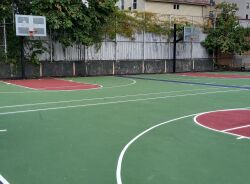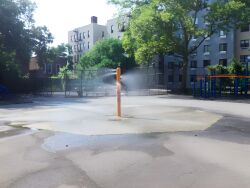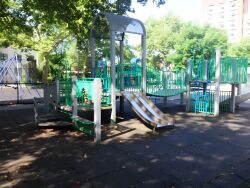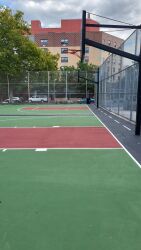Rev J Polite Playground
Reverend Polite Playground
This playground and the avenue that forms its western boundary are both named for Reverend James Arthur Polite (1899-1980), a much-loved pastor of the nearby Thessalonia Baptist Church. Born in Beauport, South Carolina, Polite became pastor of the Bronx church in 1939. He not only ministered to his own flock, but also saw to the welfare of residents throughout the Bronx. He was an active member of the National Association for the Advancement of Colored People (NAACP). Because of Polite’s interest in the missionary movement, the government of the former British Guiana invited him to attend their independence ceremony in 1966. He was president of the Baptist Ministers Conference and the Progressive Baptist Conference. His fund-raising efforts enabled the Thessalonia Baptist Church to move from 921 Eagle Avenue to its present location, at 941 Reverend James A. Polite Avenue. The street was named for Polite in 1981, and the playground, formerly known as P.S. 99 Playground, was named for Polite in 1996.
Home Street, which also borders the playground, acquired its name during the 19th century. It follows the path that led to Blythe, the residence of the wealthy merchant Francis Barretto. Blythe was one of several elaborate mansions in the Hunts Point area dating from Revolutionary times. Along the southern edge of the playground lies 167th Street, which was given a number in the 1870s in anticipation of the day that the Bronx would be incorporated into New York City and the numbering of the Manhattan street grid would be extended into the Bronx.
Intervale Avenue, the eastern boundary, overlies the valley once formed by Bound Brook (or Boundary Brook), which flowed along the eastern edge of Morrisania into the East River. The original inhabitants of the area were the Weckquaesgeek Indians, who raised corn and tobacco, and called their land Quinnahung (“Planting Neck”). In the 17th century, the Indians were displaced by European settlers. The Europeans named the peninsula for Thomas Hunt, who settled there in 1670. The newcomers farmed the land and, by the late 19th century, built elaborate estates.
Originally part of West Farms, in what was then Lower Westchester County, Hunts Point became part of New York City in 1874. It underwent significant growth after the IRT subway line to Manhattan was built in 1904. Urban development put an end to the farms and mansions, and in the 1950s Hunts Point went into a period of decline. Today, community groups are reinvigorating the area. The neighborhood is famous for the Hunts Point Terminal Market, the largest produce market in the United States.
This playground is part of P.S. 99, and is operated jointly by Parks and the Department of Education. It opened in May of 1938, on a parcel of land that was acquired through condemnation in 1936. Two more parcels were added in 1949 and 1950. London plane trees and elms provide greenery and shade on hot summer days. The playground features play equipment, safety surfaces, swings and benches and a synthetic turf athletic field.
Check out your park's Vital Signs
Clean & Safe
Green & Resilient
Empowered & Engaged Users
Share your feedback or learn more about how this park is part of a
Vital Park System





